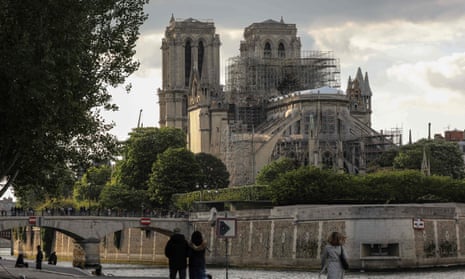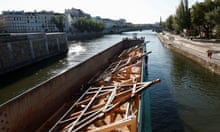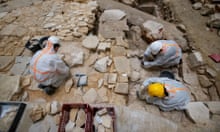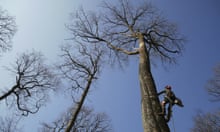Paris authorities have warned of very high lead levels on the ground immediately surrounding the fire-damaged Notre Dame cathedral but insisted there was no danger from breathing the air, after environmental groups likened the site to “toxic waste”.
The latter are preparing to step up pressure this week over the possible pollution danger from toxic metal particles from the cathedral fire. Campaign groups will hold a press conference on Friday to warn of their concerns about the danger from the combustion of lead in last month’s blaze which destroyed the Gothic cathedral’s roof, spreading lead-laden dust.
Paris police issued a statement on Thursday saying there was no risk of toxic inhalation from the air and that high lead levels found on the ground were limited to the area immediately surrounding the cathedral – which is currently closed to the public – and not further afield.
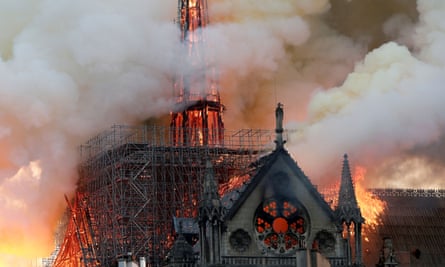
Hundreds of tons of lead were used in Notre Dame’s frame, as well as the church spire that burned and collapsed on 15 April in a blaze which is being treated as accidental. When the cathedral roof caught fire it led to the combustion of vast amounts of the metal.
The Paris police statement on Thursday said that on the surface of pavements and gardens immediately adjoining the cathedral, lead levels were found to be very high: between 32 and 65 times the recommended limit by French health authorities. The areas closest to the cathedral are currently closed. Lead levels are also high within the cathedral itself.
But the police said there was no sign of higher-than-normal lead levels on the ground in the wider neighbourhood around Notre Dame.
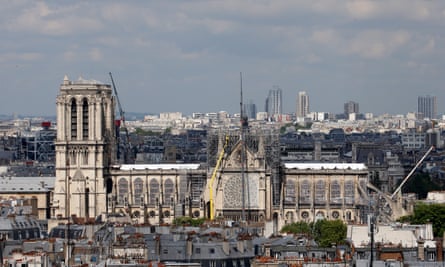
Shortly after the fire, the Paris police advised locals to clean surfaces with a damp cloth and pregnant women and children to wash hands frequently.
“With regard to homes or private premises, it is recommended that residents in the immediate vicinity of the Notre Dame proceed to clean their home or premises and their furniture and other items, using wet wipes to eliminate any dust,” police had said.
But the French environmental campaign group Robin des Bois has warned that about 300 tonnes of lead from the cathedral’s roof and steeple had melted in the blaze. “The cathedral has been reduced to the state of toxic waste,” the association said shortly after the fire, urging authorities to detoxify the tonnes of rubble, ash and wastewater produced in the disaster.
The group will on Friday reiterate its concerns over health risks from the blaze and possible contamination of the Seine.
Since the fire, the police have maintained that the threat from lead was limited, saying lead poisoning usually builds up over years of exposure. There have been no reports of acute lead poisoning since the blaze that destroyed the roof of the 850-year-old landmark.
